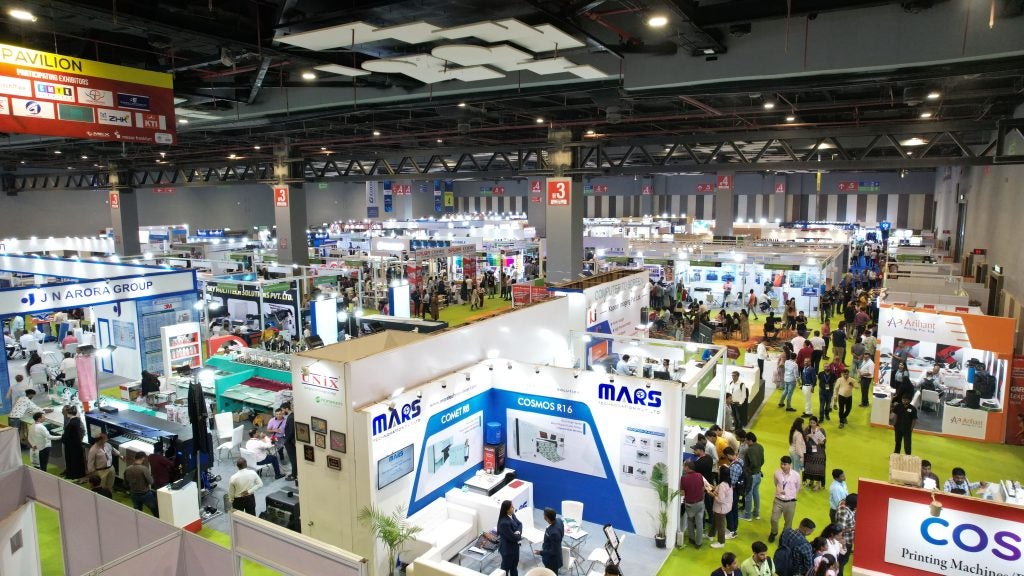The Sustainable Apparel Coalition (SAC) explains the focus of its first report, following the independent review of its Higg Materials Sustainability Index (MSI) and Higg Product Module (PM), titled 'Technical review of the Higg MSI and Higg PM tools' sets out detailed recommendations for how the tools can continue to be developed to answer the fashion sector's requirements.
Accounting firm KPMG facilitated the report and recruited an independent panel of 10 experts representing a cross-section of the industry.
The SAC says it is responding to the recommendations by setting out how they will be incorporated in current and future updates.
Jeremy Lardeau, VP, Higg Index, SAC explains: “Science isn’t static — and neither are we. We are committed to continued enhancement to arm the industry with the most robust, data-driven tools so that we can all stand behind decisions that are as socially responsible as they are environmentally sound. Through ongoing updates, our tools become more and more powerful at helping end users- our brand and manufacturer members- to evolve their businesses and drive more impact in their supply chains."
What is the Higg Index, Higg PM and Higg MSI?
SAC explains that one of its key initiatives to drive collective action toward creating an equitable and restorative consumer goods industry was the development of the Higg Index.
The Higg Index is a comprehensive suite of tools designed for the standardised measurement of sustainability across the value chain.
The primary aim of the Higg Index is to empower brands, retailers, and manufacturers with verified data to assess, enhance, and transparently share their environmental and social performance.
The SAC says it is committed to continuously improving these tools, thereby enabling the industry to drive significant social and environmental change. To ensure this continuous development, periodic reviews of the tools are conducted, considering the evolving context in which they are utilised.
Through the continuous evolution of the Higg Index Tools, the aim is to provide users with access to the most up-to-date, accurate data against relevant industry standards in order to drive sustainable decision making across the industry.
SAC points out the Higg MSI is the apparel industry’s most used tool to measure the environmental impacts of materials. It is a cradle-to-gate material assessment tool used by designers to help them make more informed and responsible choices around materials.
Meanwhile, the Higg PM was launched in June 2021 to help organisations evaluate the full environmental impact of a product. It measures the cradle-to-grave environmental impacts of a product from the point of resource extraction to manufacturing impacts, all the way through product durability, care, and end of use.
What are the key recommendations from the initial Higg Index Review?
The report explains its findings were collected, discussed, and refined using questionnaires, one-on-one sessions, expert discussions, and tool Q&A sessions. KPMG consolidated the final findings into its report to support the SAC in further evolving the tools.
The recommendations are divided into 70-100% expert support (majority of experts), 40-69% expert support (approximately half of experts) and 10-39% expert support (minority of experts).
The recommendations were also assigned a level of priority (high, medium or low).
High priority recommendations made by majority of experts for goals and scope definition
- Higg MSI and Higg PM should implement warnings where comparisons should not be performed.
- Allocation procedures should be more transparent and uncertainty analysis should be provided regarding impacts of chosen procedures.
- Higg MSI should be integrated into the Higg PM
- Higg PM goal should be better described
- The tools should provide a process flow diagram representing the system boundaries of the study as suggested by the ISO standards.
High priority recommendations made by majority of experts for inventory analysis
- The Higg MSI and Higg PM should provide sensitivity analysis to support the claims for using assumptions and global averages
- Higg MSI and Higg PM analyses should use energy grid and water consumption in the factory level geography to improve the
geographical coverage data quality requirement - The SAC should define a strategy to improve data quality
- The geography of the dataset should be shown in the name of the dataset, and not only as part of the metadata
- The Higg MSI and Higg PM should use specific factory data from the facility module (Higg FEM) to improve the geographical coverage and technology coverage data quality requirement.
High priority recommendations made by majority of experts for impact assessment
- The tools should align with PEF impact categories
- Higg MSI and Higg PM should discontinue use of current chemistry assessment.
High priority recommendations made by majority of experts for interpretation
- Higg MSI and Higg PM should be compliant with PEF when it is ready for use, provided PEF increases data quality
- When communicating results about the LCA to any external party, third-party reviews are needed to comply with ISO standards.
Initial SAC Higg Index review report conclusions
The report explains the extensive list of identified recommendations suggests the SAC take action to improve the tools while also recognising the industry-wide challenges for collective acknowledgment and a sector-wide approach.
The experts highlight that by adopting the recommendations detailed in this report, the Higg PM's alignment with both internal and B2B use cases will be significantly enriched. The experts believe the integration of the Higg MSI with the Higg PM can leverage its potential for both internal and B2B scenarios.
The report reads: "All in all, overcoming these hurdles and unlocking the tools’ full potential will require industry-wide and cross-sector collaboration By embracing the recommendations and collaborating as an industry, the SAC can build on the positive momentum toward a more sustainable and responsible textile, apparel and footwear industry. The dedication to improvement and the openness to collective action set a promising path for the continuous evolution of these tools, as they aim to decrease environmental impacts and promote sustainable practices in the industry."
SAC's Lardeau is inviting all stakeholders in the textile, apparel and footwear industry to engage with this report, recognising that while individual recommendations may not always be aligned, they are stepping stones towards increased collaboration for a shared path forward.
He says: "The need for increased collaboration, along with communication, and the development of a shared vision are essential as we work together to implement these recommendations and drive positive change on a global scale.
"We are committed to continued enhancement to arm the industry with the most robust, data-driven tools so that we can all stand behind decisions that are as socially responsible as they are environmentally sound. Through ongoing updates, our tools become more and more powerful at helping end users- our brand and manufacturer members- to evolve their businesses and drive more impact in their supply chains.
"To see the panel agreeing that the Higg MSI and Higg PM tools demonstrate strengths across all four International Organization for Standardization (ISO) Life Cycle Analysis (LCA) phases to quantify and assess the environmental impacts of materials and products helps to validate the work that has gotten us to this point. However, as with any evaluation, the most important elements are those that show where more development would be beneficial – and it is these that we are now actively working on."
The SAC’s board of directors adds in a collective statement: “This review highlights the complexity of product sustainability assessments, which cover collecting, measuring, and appropriately utilizing sustainability impact data originating at the early stages of global supply chains for business decisions. Moreover, the often diverging expert viewpoints shared in the report reinforce the need for robust collaboration toward delivering a harmonised approach to value chain sustainability data. We commend the SAC for conducting this expert review and commit to empowering the SAC to integrate appropriate recommendations into the SAC’s strategic plan, while inviting interested stakeholders to join this effort.”
The SAC states that in areas where it is not already actively working on implementing recommendations, it is defining the best ways to do so during the next phase of tool development.
The SAC points out the remaining Higg Index Review reports for the Higg BRM and the Higg FEM are expected in 2024.
The Higg BRM was updated in March 2023, and the Higg FEM tool will be updated in November 2023. Based on the timing of these updates, the Higg Product Tools were reviewed first. The remaining Higg Index Review reports will be shared by the SAC once they have been finalised by the review panels.
The SAC came under fire last year with its Higg Index tool being described as “misleading” by several European advertising watchdogs.
Fashion brand H&M and outdoor brand Norrona had been reprimanded for green claims made in their clothing marketing, with the Norwegian Consumer Agency (Forbrukertilsynet) saying it believed Norrøna was “breaking the law” through its marketing claims, which were based on the Higg Index.
Last autumn, the SAC said it was continuing to explore ways to communicate environmental information to consumers after Forbrukertilsynet indicated claims in general, and based on Higg data, must be sufficiently documented and qualified.















